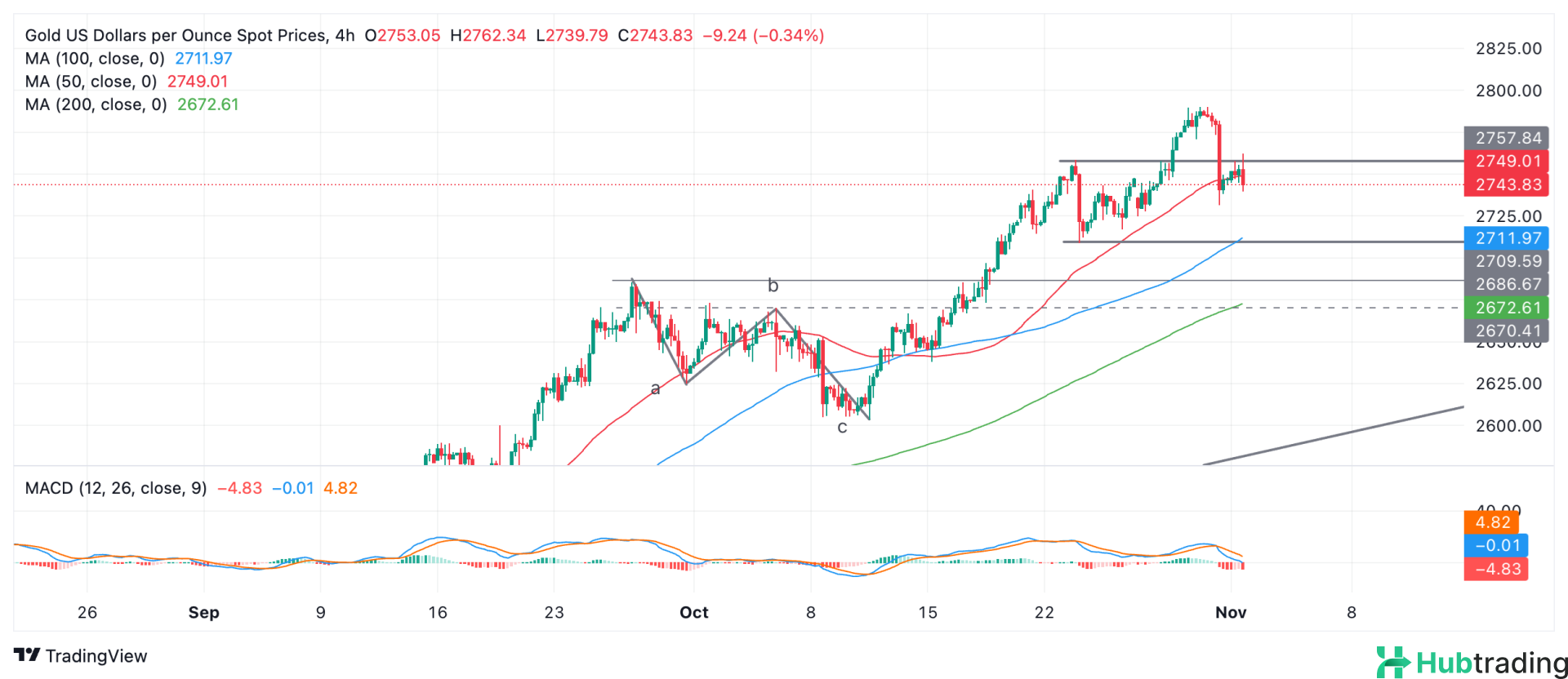- Gold eases after a brief surge following the release of weaker-than-expected Nonfarm Payrolls data.
- The precious metal sees additional support from safe-haven demand as hopes for a Middle East ceasefire fade amid renewed hostilities.
Gold (XAU/USD) edged lower in volatile trading on Friday. After briefly surging to the $2,760 range following a weaker-than-expected U.S.
Nonfarm Payrolls (NFP) report, which showed a sharp drop to 12K jobs in October (far below the 113K forecast and September’s revised 223K), the precious metal sold off to the $2,740s.
The mixed data from the U.S. Institute of Supply Managers (ISM) may have contributed to Gold’s loss. The ISM Manufacturing PMI declined to 46.5 in October, down from 47.2 in September, and below the expected 47.6. However, the inflation-sensitive ISM Manufacturing Prices Paid Index rose to 54.8 in October from 48.3 previously, surpassing the 48.5 forecast. The increase in prices paid could indicate that inflation remains a concern, potentially lowering the likelihood of aggressive Federal Reserve rate cuts, which weighed on Gold.
Federal Reserve Outlook and Labor Market Concerns
The lower-than-expected job growth in the NFP data could signal potential weakness in the U.S. labor market, raising concerns for the Federal Reserve and potentially increasing the chances of future rate cuts. Such a move would support Gold, as lower rates reduce the opportunity cost of holding non-yielding assets, making Gold more appealing to investors.
Additional data from the Bureau of Labor Statistics revealed the Unemployment Rate held steady at 4.1% in October, aligning with expectations. Average Hourly Earnings increased to 4.0% year-over-year, slightly up from September’s revised 3.9%, and rose 0.4% month-over-month, exceeding the 0.3% estimate. Average Hours Worked also increased slightly to 34.3, aligning with expectations.
Safe-Haven Demand Reignites Gold Rally
Gold has rebounded due to renewed safe-haven demand as tensions in the Middle East escalate. Hopes of a ceasefire were dashed by a Hezbollah rocket attack in northern Israel, killing seven people, marking the worst strike in recent months. Additionally, intensified bombings in Beirut led to over 55 casualties, as reported by Al Jazeera. Uncertainty around the upcoming U.S. presidential election, with polls showing a close race, has further fueled demand for Gold.
Technical Analysis: Gold Rebounds, Holds Uptrend
Gold is recovering after pulling back into its previous trading range of $2,708 to $2,758.
Despite recent volatility, the metal remains in an uptrend across short, medium, and long time frames, supporting a bias toward further upside.
XAU/USD 4-hour Chart

On the technical side, the Relative Strength Index (RSI) on the 4-hour chart has dipped below the 50 mark for the first time since October 10, indicating a temporary bearish trend. Should Gold continue its pullback, support is expected at $2,708.
However, if the overall uptrend resumes, a break above $2,790 could lead to a test of resistance at the psychological level of $2,800, followed by $2,850.





